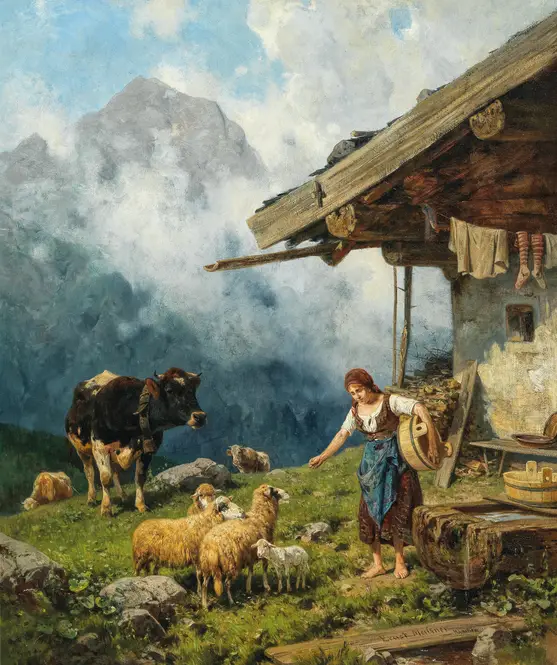Ernst Adolph Meissner
Ernst Adolph Meissner (1867–1938), German, Though not a household name, this German painter and graphic artist carved out a distinctive niche in late 19th- and early 20th-century art with his meticulous draftsmanship and atmospheric sensitivity. Trained at the Dresden Academy of Fine Arts, his early work leaned into academic realism, but exposure to Symbolism and Jugendstil (the German counterpart to Art Nouveau) infused his later pieces with a haunting, almost poetic ambiguity. Landscapes and allegorical scenes dominated his output, often rendered in muted tones that suggested twilight or the quietude of dawn—moments suspended between worlds.
Meissner’s etchings and lithographs reveal a particular fascination with texture; whether depicting gnarled tree bark or the delicate folds of drapery, his lines carried a tactile energy. Critics occasionally likened his approach to Max Klinger’s, though his compositions lacked the latter’s overt theatricality. Instead, there was an introspective quality, as if each image was a half-whispered confession. His 1908 series *Stimmungen* ("Moods") captured this perfectly—a sequence of brooding forests and solitary figures that felt less like observations and more like psychological self-portraits.
Despite exhibiting alongside more celebrated peers, commercial success eluded him. The rise of Expressionism and abstraction left his nuanced, symbol-laden style out of step with the avant-garde. Yet in recent decades, niche collectors and scholars have revisited his oeuvre, drawn to its quiet insistence on beauty as something fragile, fleeting, and deeply personal.
Meissner’s etchings and lithographs reveal a particular fascination with texture; whether depicting gnarled tree bark or the delicate folds of drapery, his lines carried a tactile energy. Critics occasionally likened his approach to Max Klinger’s, though his compositions lacked the latter’s overt theatricality. Instead, there was an introspective quality, as if each image was a half-whispered confession. His 1908 series *Stimmungen* ("Moods") captured this perfectly—a sequence of brooding forests and solitary figures that felt less like observations and more like psychological self-portraits.
Despite exhibiting alongside more celebrated peers, commercial success eluded him. The rise of Expressionism and abstraction left his nuanced, symbol-laden style out of step with the avant-garde. Yet in recent decades, niche collectors and scholars have revisited his oeuvre, drawn to its quiet insistence on beauty as something fragile, fleeting, and deeply personal.
-

Morgen auf der Alm
Ernst Adolph Meissner (German, 1867–1938)A misty alpine dawn painted with delicate light and quiet solitude, where every brushstroke feels like a held breath.